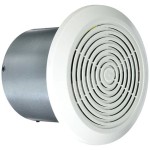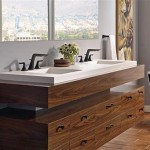Small Bathroom Remodeling Ideas On A Budget
Remodeling a small bathroom can feel overwhelming, especially when budget constraints are a primary concern. However, strategic planning and resourceful decision-making can transform a cramped and outdated space into a functional and aesthetically pleasing oasis without breaking the bank. This article outlines several cost-effective remodeling ideas, focusing on maximizing space, minimizing expenses, and achieving a stylish and practical small bathroom design.
Before embarking on any remodeling project, careful assessment of the existing space is crucial. This includes identifying areas that require immediate attention, such as plumbing issues or structural damage, and evaluating the current layout to determine potential improvements for space optimization. A detailed budget should also be established, allocating funds for materials, labor (if necessary), and unexpected expenses. Prioritizing essential upgrades over purely cosmetic changes can help maintain budget adherence.
Maximize Space with Strategic Fixture Choices
In a small bathroom, every inch of space is valuable. Selecting fixtures that are specifically designed for compact spaces can significantly enhance functionality without compromising on comfort. Wall-mounted sinks and toilets, for example, free up floor space, creating a more open and less cluttered feel. These fixtures also simplify cleaning, which is an added benefit in a small bathroom.
Corner sinks are another excellent option for bathrooms with limited square footage. These sinks fit snugly into corners, utilizing otherwise unused space and maximizing the room's usable area. Similarly, smaller vanity cabinets with built-in storage can provide ample space for toiletries and personal care items without overwhelming the room. When choosing a vanity, consider options with open shelving in addition to closed cabinets. Open shelving allows for visual breathing room, preventing the space from feeling too enclosed.
Replacing a traditional bathtub with a shower stall can also free up significant space in a small bathroom. A glass shower door or a shower curtain can further enhance the feeling of openness. If retaining a bathtub is essential, consider a smaller, more compact tub or a shower-tub combination unit. These units offer the functionality of both a shower and a bathtub while minimizing the space required.
Mirror placement is also crucial for maximizing the perception of space. A large mirror, or even better, a mirrored cabinet, can visually expand the room and reflect light, making the bathroom feel brighter and more spacious. Consider a frameless mirror to further minimize visual clutter and create a more seamless look.
Economical Material Selection and Smart Shopping
The choice of materials significantly impacts the overall cost of a bathroom remodel. Opting for budget-friendly materials without sacrificing quality is key to staying within budget. For example, ceramic or porcelain tiles are often more affordable than natural stone options like marble or granite. These tiles are also durable, water-resistant, and available in a wide variety of styles and colors, making them a practical and aesthetically pleasing choice for bathroom floors and walls.
Vinyl flooring is another cost-effective alternative to tile. Modern vinyl flooring options are available in a range of patterns and textures, including realistic wood and stone looks. Vinyl is also water-resistant, easy to clean, and relatively simple to install, making it a great option for DIY enthusiasts. When selecting vinyl flooring, ensure it is specifically designed for bathroom use to ensure optimal water resistance and durability.
Instead of replacing all the existing fixtures, consider refinishing or repainting them. An old bathtub can be refinished to look like new for a fraction of the cost of replacing it. Similarly, outdated vanity cabinets can be refreshed with a fresh coat of paint and new hardware. This simple update can dramatically transform the look of the bathroom without a significant investment.
Shopping around for deals and discounts is crucial for staying within budget. Check online retailers, local hardware stores, and salvage yards for discounted materials and fixtures. Consider purchasing discontinued or slightly imperfect items, as these are often available at significantly reduced prices. Timing purchases strategically can also save money. Many retailers offer sales and promotions during holidays and off-seasons.
When purchasing materials, consider the quantity needed carefully to avoid overbuying. Accurate measurements are essential for calculating the required amount of tile, flooring, and paint. Overbuying can lead to unnecessary waste and increased costs. Similarly, when choosing paint colors, consider purchasing sample sizes to test the colors in the bathroom's lighting conditions before committing to a larger quantity.
DIY Projects and Cost-Saving Labor Strategies
Undertaking some of the remodeling tasks as DIY projects can significantly reduce labor costs. Tasks such as painting, installing new hardware, replacing light fixtures, and applying new caulking are often within the capabilities of homeowners with basic DIY skills. Numerous online tutorials and resources are available to guide homeowners through these projects.
However, it is important to be realistic about one's skills and limitations. Tasks that involve plumbing, electrical work, or structural modifications should be left to qualified professionals. Attempting these tasks without proper knowledge and experience can lead to safety hazards and costly repairs.
If hiring a contractor is necessary, obtain multiple quotes from different contractors to ensure a competitive price. Check references and read online reviews before hiring any contractor. Clearly communicate the budget limitations and project scope to the contractor to avoid misunderstandings and cost overruns. Consider breaking down the project into smaller phases to manage costs more effectively.
Consider assisting the contractor with certain tasks to reduce labor costs. For example, homeowners can handle demolition, cleanup, and painting, while the contractor focuses on more specialized tasks such as plumbing and electrical work. Negotiate the terms of the contract carefully to ensure that all costs and responsibilities are clearly defined.
Lighting plays a crucial role in the overall ambiance of a bathroom. Replacing outdated light fixtures with energy-efficient LED fixtures can not only improve the bathroom's aesthetics but also save money on electricity bills in the long run. Consider adding task lighting, such as vanity lights, to provide adequate illumination for grooming tasks. Adding a dimmer switch can also create a more relaxing and spa-like atmosphere.
Accessorizing a small bathroom thoughtfully can enhance its style and functionality without significant expense. Adding a new shower curtain, bath mats, and towel bars can instantly refresh the look of the bathroom. Consider using decorative storage containers and baskets to organize toiletries and personal care items. Adding a few strategically placed plants can also bring life and vibrancy to the space. By focusing on these small details, a small bathroom can be transformed into a stylish and inviting space on a budget.

10 Tips For Designing A Small Bathroom Maison De Pax

Our Small Bathroom Remodel On A Budget Jane At Home

Half Bath A Small Bathroom Remodel On Budget

11 Budget Small Bathroom Ideas Under 100

Our Small Bathroom Remodel On A Budget Jane At Home

A Small Bathroom Remodel In Atlanta On Budget Sweeten

Bathroom Remodel On A Budget Simple Made Pretty 2025

Half Bath A Small Bathroom Remodel On Budget

Small Bathroom Ideas To Make Your Efficient

Revamp Your Bathroom On A Budget 7 Amazing Remodel Ideas







